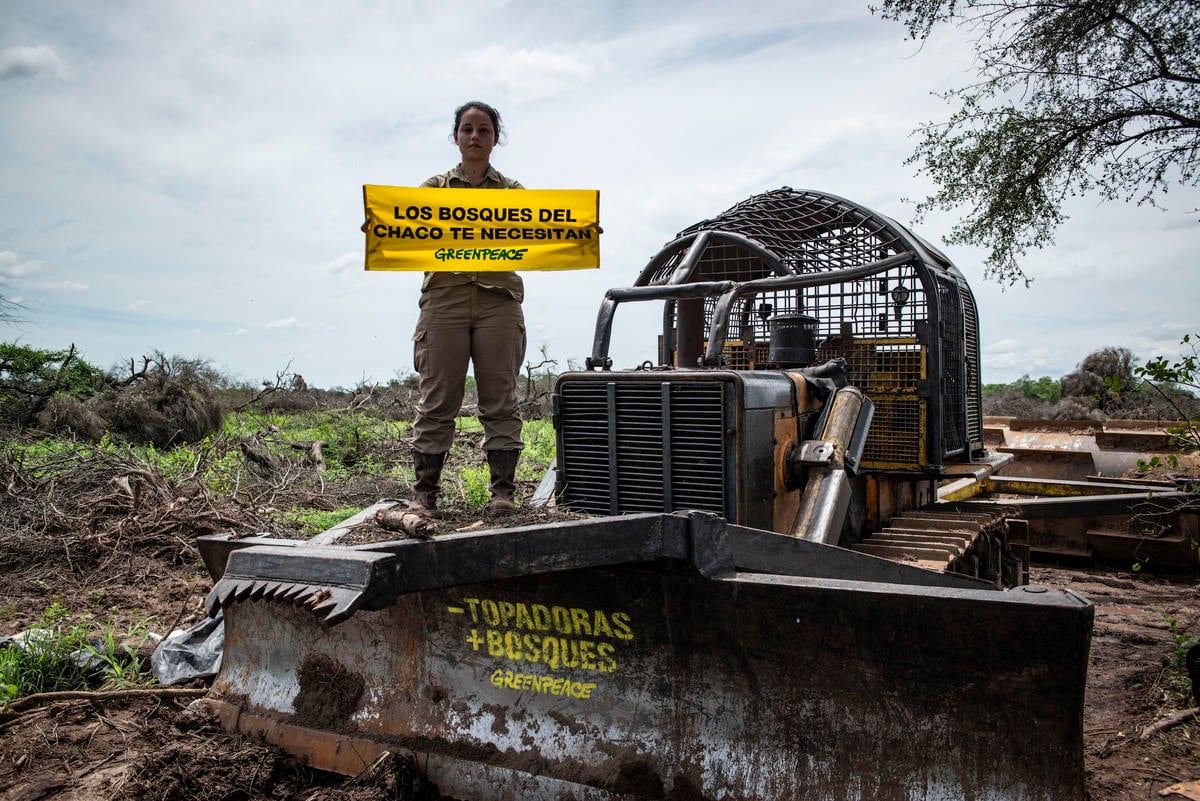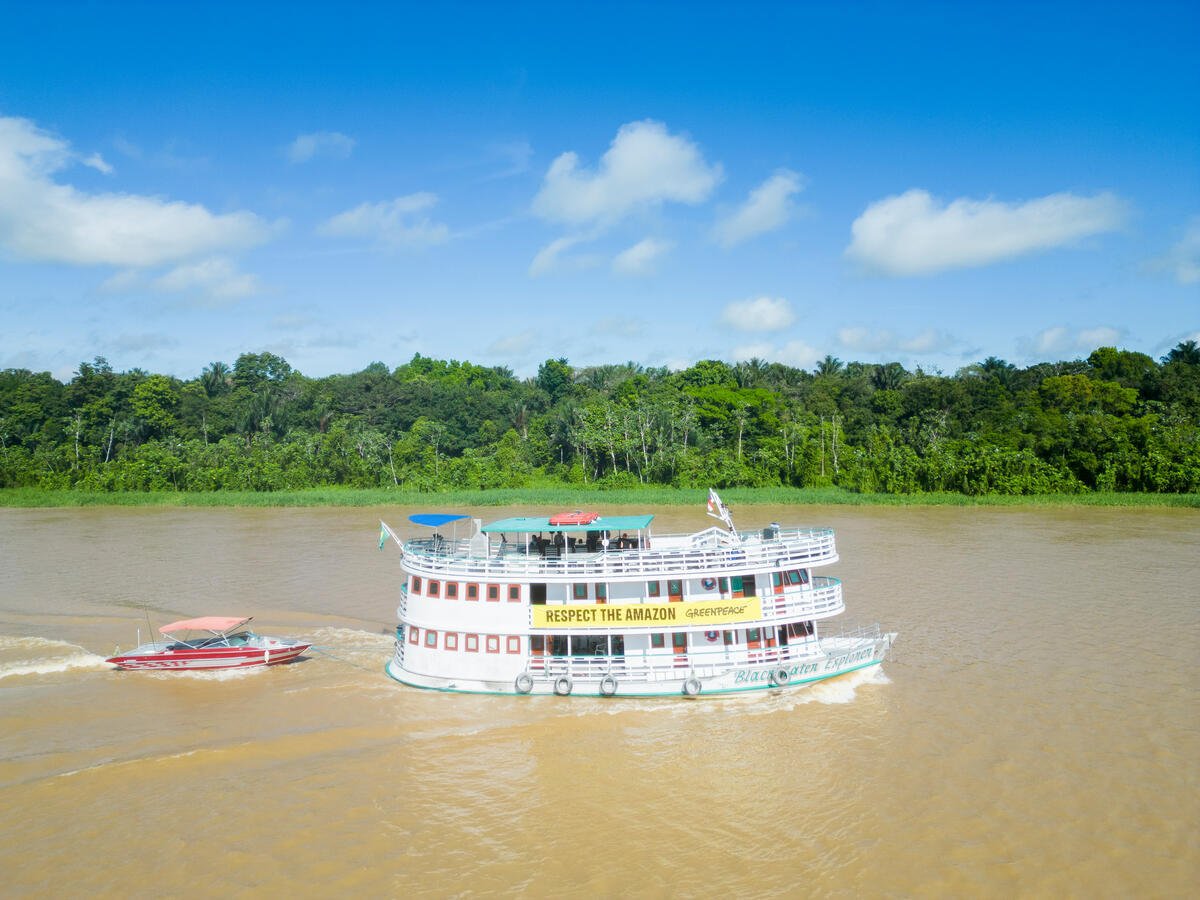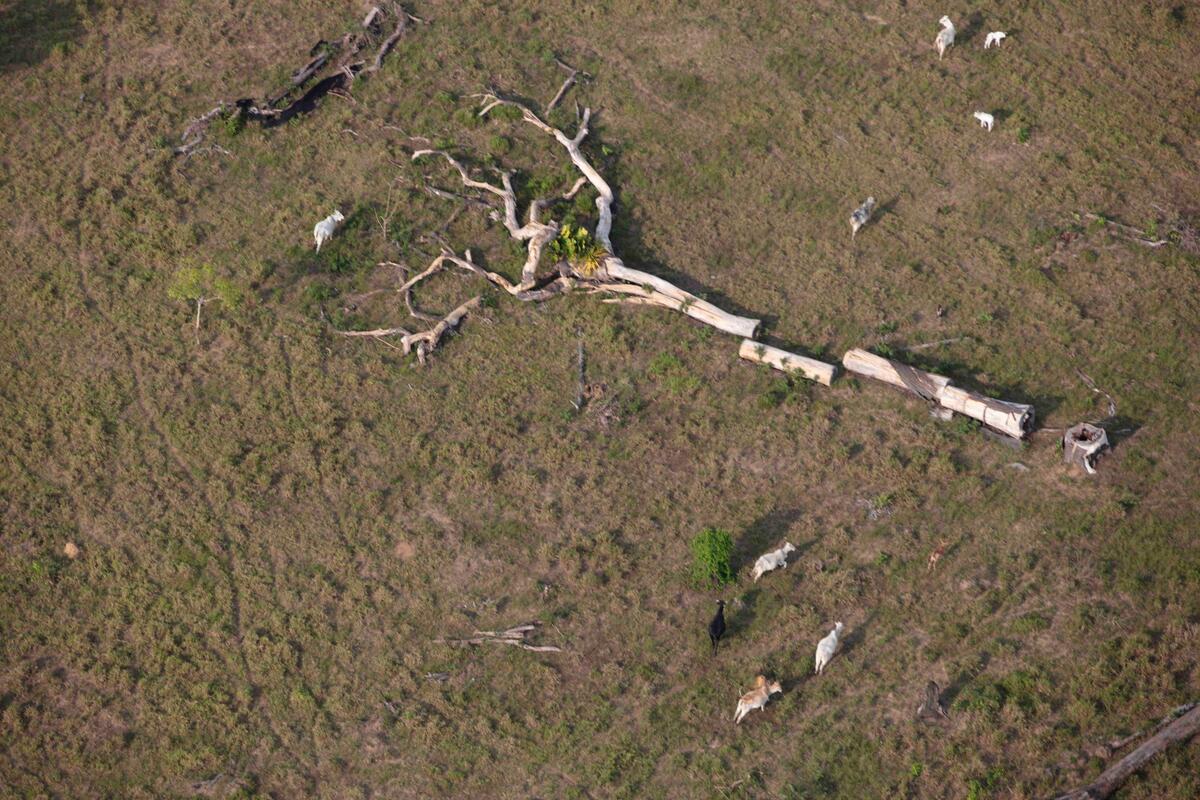
Greenpeace Argentina activists confronted a bulldozer operating illegally in an area of the Chaco Forest protected by Argentina’s National Forest Law. The biggest drivers of illegal deforestation in the region are the expansion of soy and livestock production.
Chaco, Argentina – Greenpeace Argentina activists are in the Chaco Forest documenting illegal deforestation contributing to massive flooding across northern Argentina. Just yesterday, the activists confronted a bulldozer that was illegally clearing forest in a protected area. Illegal forest destruction — driven by the rapidly expanding agricultural industry — is putting local communities and native species at risk across the vulnerable Chaco Forest.
Photos: https://media.greenpeace.org/shoot/27MZIFJWCG8KS
Forest destruction is also contributing to widespread flooding[1] worsened by climate change that has killed at least four people and forced thousands to evacuate.
“The devastating floods that are claiming lives across northern Argentina are no ‘natural’ disaster,” said Amanda Starbuck, campaigns director for Greenpeace Andino, who is in the Chaco Forest this week. “They are made worse by climate change and forest destruction for intensive soy and livestock production. Forests act as a natural sponge, absorbing rainfall. We are here today exposing the deforestation for a simple reason: fewer forests means more flooding.”
In the last 30 years, Argentina has lost 8 million hectares of native forest, mostly in the north of the country. Commodities from the soy and livestock plantations taking the forest’s place are primarily exported to Europe and China. The province of Chaco has seen the most deforestation in the last three years, with more than half of the land cleared (54,327 of 103,908 hectares) protected under Argentina’s National Forest Law.[2]
According to the Argentine National Agricultural Technology Institute, one hectare of the Chaco Forest can absorb 300 millimetres of rainfall per hour.[3] By contrast, one hectare of pastoral land can absorb 100 millimetres, and one hectare of soy plantation just 30 millimetres. Already this month, Chaco has received 473 millimetres of rainfall, a 66-year record.
Greenpeace Andino is calling on the Chaco provincial government and Governor Domingo Peppo to stop the destruction and uphold national laws protecting native forests.[4] Peppo has authorized the clearing of 51,768 hectares of forest — an area nearly three times the size of Buenos Aires — including in zones protected by the National Forest Law.
ENDS
Notes:
[2] http://greenpeace.org.ar/pdf/2018/12/Desmontes%20SA%20Parte%204%20FINAL%20%281%29.pdf (Spanish)
[3] https://inta.gob.ar/sites/default/files/script-tmp-inta_napas_mjz_13.pdf (Spanish)
[4] http://www.greenpeace.org/argentina/es/noticias/Greenpeace-Las-inundaciones-seran-recurrentes-si-no-se-frena-la-deforestacion/ (Spanish)
Photos:
https://media.greenpeace.org/shoot/27MZIFJWCG8KS
Contacts:
Mariana Ciaschini, Senior Press Officer, Greenpeace Andino: +54 9 11 3304 3316, [email protected]
Greenpeace International Press Desk (available 24 hours): +31 (0)20 718 2470, [email protected]



